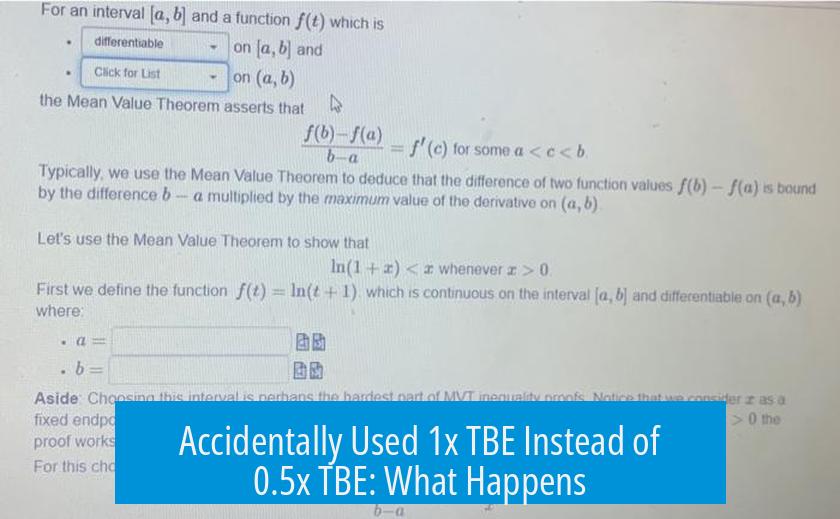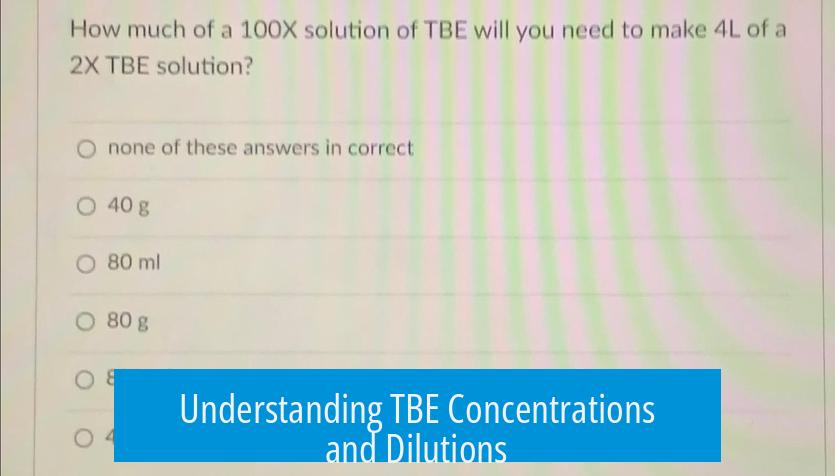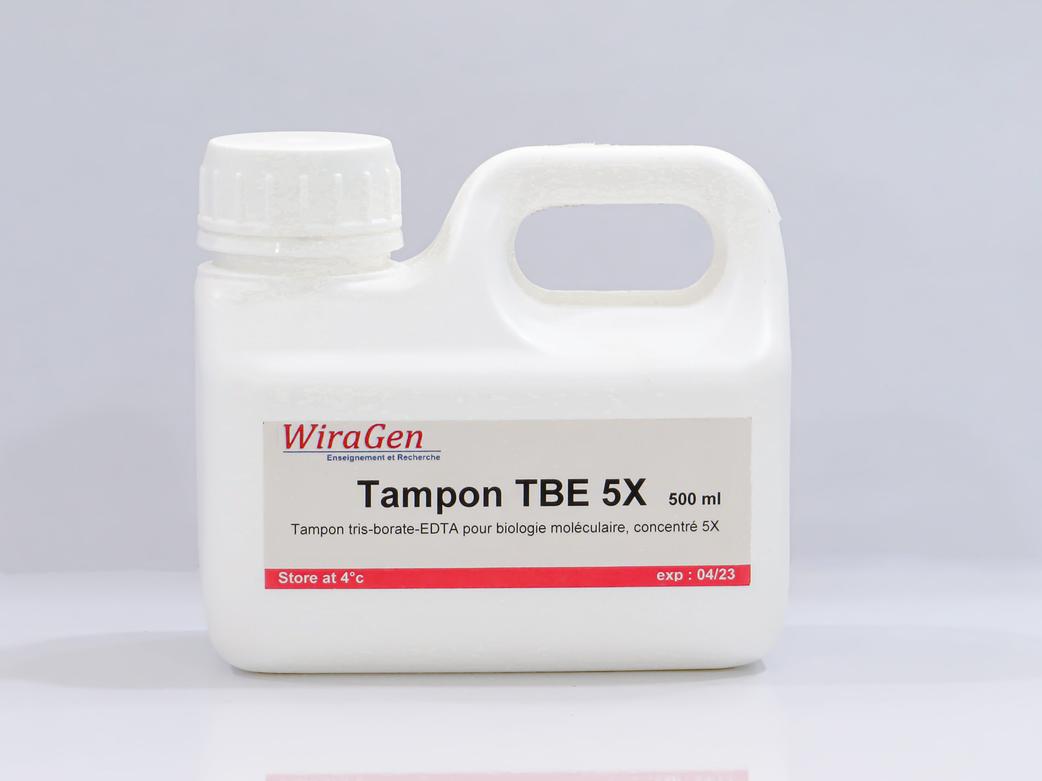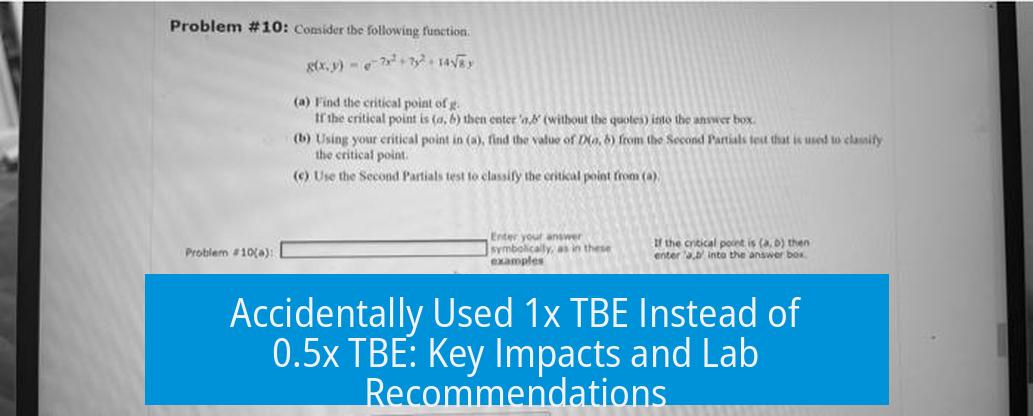Accidentally Used 1x TBE Instead of 0.5x TBE: What Happens?

Accidentally using 1x TBE buffer instead of 0.5x TBE will generally not cause major problems in electrophoresis results but may affect band sharpness, running speed, and buffer longevity. It is often acceptable to continue with 1x TBE, but for standardized reproducibility, especially in publications, repeating assays with the correct concentration is advisable.
Understanding TBE Concentrations and Dilutions

TBE (Tris-Borate-EDTA) is a common buffer in nucleic acid electrophoresis. The “1x” or “0.5x” designation indicates the working dilution relative to the stock solution. Typically, TBE stock solutions are prepared as 5x concentrations, requiring a fivefold dilution to reach 1x working solution.
- 5x Stock Solution: Contains five times the concentration of each component compared to the working buffer. Diluting it fivefold with water yields the 1x working solution.
- 1x Working Solution: The standard concentration used for most electrophoresis runs.
- 0.5x Working Solution: A half-strength buffer, less commonly used but sometimes recommended.
A common misconception is to always dilute stock solutions tenfold. This does not apply to 5x TBE, where a fivefold dilution is correct. Using 0.5x TBE represents a tenfold dilution from 5x stock, leading to half the ionic strength of the standard 1x buffer.

Consequences of Using 1x TBE Instead of 0.5x TBE
Using full-strength 1x TBE rather than a half-strength 0.5x can alter electrophoresis behavior in several ways:

Buffering Capacity and Heat Generation
1x TBE has higher ionic strength, yielding stronger buffering capacity during electrophoresis. This helps maintain pH stability over longer runs. However, the increased ion concentration can cause more heat generation at high voltages.

- Higher buffer concentration reduces pH fluctuations and gel “smiling.”
- Excess heat may require lowering voltage or extending run time.
Band Resolution and Migration Patterns
Electrophoretic mobility depends on ionic strength and buffering. Using 1x TBE often improves band sharpness and running front linearity compared to 0.5x TBE. Bands tend to be cleaner and easier to analyze.

- 1x TBE usually produces more uniform, smooth migrating DNA bands.
- 0.5x TBE can result in uneven DNA migration and distorted band shapes.
Reusability and Longevity
1x TBE can usually be reused multiple times—up to five or ten runs—without significant loss of buffering capacity or quality. The 0.5x solution is less robust for reuse.
When Does This Matter?
In many routine laboratory settings, substituting 1x TBE for 0.5x TBE is not critical. The electrophoresis results will largely be comparable, and minor differences might go unnoticed. If the protocol is flexible, continuing with the 1x solution is often acceptable.
However, when precise protocol adherence is required, such as publication or comparison with past data, maintaining the specified 0.5x concentration is important. Any deviation may raise questions about reproducibility or interpretation.
Recommendations For Handling This Error
- Make a Note: Document the concentration used for future reference.
- Compare Results: If possible, run parallel gels with 0.5x and 1x TBE to assess any differences.
- Repeat Critical Assays: If the data are intended for publication or high-precision experiments, replicate the assay with the correct 0.5x buffer.
- Adjust Running Conditions: For 1x TBE runs, reduce voltage or increase run time to mitigate heat buildup.
Summary of Key Points
- TBE buffer stocks come as 5x; working solutions are 1x by fivefold dilution.
- Using 1x TBE instead of 0.5x increases ionic strength and buffering.
- Higher concentration improves band quality and gel longevity.
- Heat may increase with 1x TBE; adjust voltage or run time accordingly.
- In non-critical cases, 1x TBE use is often acceptable.
- For publication or strict protocols, repeat with correct 0.5x buffer.
Accidentally Used 1X TBE Instead of 0.5X TBE: What Happens Next?
Accidentally using 1X TBE instead of 0.5X TBE usually won’t wreck your gel electrophoresis results, but it might tweak them a bit—sometimes even for the better. So, before you panic and toss your gel into the chemical abyss, let’s unpack why this mix-up happens, what effects it has, and how you can turn this “mistake” into useful lab lore.
What Exactly Is TBE and Why Concentrations Matter
TBE buffer, short for Tris-Borate-EDTA, comes in several concentrations. Usually, you start with a stock solution, which is a concentrated magic potion of sorts, and dilute it to a working solution. The working solution—the one that actually touches your gel and DNA—is typically the 1X concentration.
Here’s the catch: stock solutions aren’t always made the same. Most labs use 10X stocks, which you dilute tenfold before use. But TBE breaks the rules. Its “stock” solution often comes as 5X. Hence, you only need to dilute it fivefold (not tenfold) to get your working 1X solution.
This little quirk can trip you up. For example, a PhD student once insisted every stock should be diluted tenfold. Using a 5X TBE stock, that meant she ended up with 0.5X TBE—half-strength. The result? Uneven DNA bands on her gel, weird running fronts, and bands that looked like ocean waves rather than neat little stripes.
She finally realized the 5X label was not some cryptic joke but a real instruction: dilute fivefold to get 1X.
So What Happens When You Use 1X TBE Instead of 0.5X?
Contrary to what you might expect from a concentration mishap, using 1X TBE instead of 0.5X generally does not ruin your gel. In fact, it often improves gel quality. You can look forward to:
- Smoother, more even DNA bands that are easier to analyze.
- A more linear running front with fewer gel artefacts.
- Better buffering capacity that prevents “smiling”—those curved band distortions you hate.
- The ability to reuse 1X TBE multiple times without losing quality, making it quite economical.
One seasoned molecular biologist noted running gels overnight (up to 19 hours!) in 1X TBE buffer without issues for over a year. So, it’s not just acceptable—sometimes it’s downright beneficial.
What About the Gel Electrophoresis Results? Should You Worry?
In practice, switching from 0.5X to 1X might feel like swapping a decaf for a double espresso: you get more energy (buffering capacity) but the core effect—DNA migration—basically stays intact.
One report even said they never noticed a difference after switching to 0.5X, despite years using 1X.
Little differences could show up depending on your protocol’s rigidity or how sensitive your assay is. If your protocol demands absolute precision—say, for publishing in top-tier journals—better redo the gel with standard 0.5X TBE. The reason is consistency. Standardization lets you compare your results to previous research confidently.
What Should You Know About Running Conditions?
One minor side effect of using more concentrated TBE is heat. Running 1X TBE buffer at high voltage can warm your gel chamber, risking distorted bands or even gels melting like an ice cream cone on a hot day.
If this happens, just dial down the voltage and run your gel longer. Simple fix. Your gel stays happy, your DNA stays sharp, and you keep your cool.
Recommendations for Lab Legends: When to Panic and When to Chill
- Casual experiments: Using 1X TBE instead of 0.5X is acceptable. Take notes and proceed.
- Publishing or standardized protocols: Redo the assays with the correct dilution. You’ll get questions about reproducibility otherwise.
- High-voltage runs: Watch out for heat. Lower voltage may be necessary with 1X TBE.
- Record and compare: If in doubt, run side-by-side gels with 1X and 0.5X to see if your specific samples are sensitive.
Wrapping It Up: The Unexpected Perks of Using 1X TBE
So, *will accidentally using 1X TBE instead of 0.5X TBE ruin your day?* Usually, no. It might even make your gel results prettier and your buffer last longer. Just steer clear of high voltages, and don’t forget to buffer your lab stories with a dash of humor about that PhD student’s “tenfold everything” meltdown.
Ultimately, science is about trial, error, and learning from little mishaps. Next time someone asks, “Did you use 0.5X or 1X TBE?” you can answer confidently and keep rocking those beautiful gels.
What happens if I accidentally use 1X TBE instead of 0.5X TBE?
Using 1X TBE instead of 0.5X generally won’t ruin your gel. The bands may run more evenly, and the buffer’s extra strength can improve stability. However, if your protocol needs exact conditions, consider repeating the experiment.
Can I reuse 1X TBE buffer multiple times like 0.5X TBE?
Yes, 1X TBE can be reused several times without losing quality. This is one advantage over 0.5X TBE, which may degrade faster during use.
Does using 1X TBE affect the electrophoresis run time or voltage?
Higher concentration buffers like 1X can cause the gel to heat more. You might need to lower the voltage and increase run time to prevent overheating.
Will the gel bands look different if I use 1X TBE instead of 0.5X?
Yes, gels run with 1X TBE typically show smoother and more linear bands. The running front is more even compared to 0.5X TBE, which can have distorted or wavy bands.
Should I redo my assay if I used 1X TBE by mistake?
If you are submitting your data for publication or need reproducible results, it is best to repeat the assay with the correct 0.5X TBE. For routine tests, it might be fine to proceed.
Why is TBE stock usually 5X and not 10X like other buffers?
TBE at 10X tends to precipitate because of its composition. A 5X stock avoids this problem, requiring a fivefold dilution to reach the working 1X concentration.





Leave a Comment